#Ecological Models
Explore tagged Tumblr posts
Note
oh dear. it seems that i am a -quickly looks at bio- teeny tiny protozoan unknown to science i hope a beautiful woman studies me and learns my teeny tiny protozoan secrets.
Damn I hope there's a gorgeous protozoa researcher out there to fulfill those wishes bc every model organism I've worked with has been in animalia
#quick list of what ive worked with#various passerine birds for field ecology volunteering#mice for neurophysiology research and as support staff#human cell lines for developing some rna seq methods#c elegans for a specific developmental process (current)#and three super secret specific model organisms i worked with during my phd rotations that would 100% doxx me
70 notes
·
View notes
Text
I LOVE BIOLOGY!!!!!
#🔪 - mello talks too much#(basic biology btw)#SO MUC#omhg its so fun i love it so much#micro biology and small stuff not ecology and environmental stuff that shit is lame#BUT I AM SO EXICTED FOR THIS SEMESTER!!!!!!!!!!!#I LOVE GENETICS AND MITOSIS AND THE POLYPEPTIDE MEMBRANE#i hate the citric acid cycle.#I LOVE TRANSCRIPTION AND TRANSLATION AND GENETIC MUTATIONS#I LOVE ENZYMES AND THE LOCK AND KEY MODEL AND ACTIVE SITES AND ALLOSTERIC SITES#guys i am not kidding i am giggling and blushing rn i love it so much omg#(once i get to hard biology i will want to die)
25 notes
·
View notes
Text
How the world’s favorite conservation model was built on colonial violence | Grist
On a 1919 trip to the United States, King Albert I of Belgium visited three of the country’s national parks: Yellowstone, Yosemite, and the newly established Grand Canyon. The parks represented a model developed by the U.S. of creating protected national parks, where visitors and scientists could come to admire spectacular, unchanging natural beauty and wildlife. Impressed by the parks, King Albert created his own just a few years later: Albert National Park in the Belgian Congo, established in 1925.
Widely seen as the first national park in Africa, Albert National Park (now called Virunga National Park), was designed to be a place for scientific exploration and discovery, particularly around mountain gorillas. It also set the tone for decades of colonial protected parks in Africa. Although Belgian authorities claimed that the park was home to only a small group of Indigenous people — “300 or so, whom we like to preserve” — they violently expelled thousands of other Indigenous people from the area. The few hundred selected to remain in the park were seen as a valuable addition to the park’s wildlife rather than as actual people.
And so modern conservation in Africa began by separating nature from the people who lived in it. Since then, as the model has spread across the globe, inhabited protected areas have routinely led to the eviction of Indigenous peoples. Today, these conservation projects are led not by colonial governments but by nonprofit executives, large corporations, academics, and world leaders.
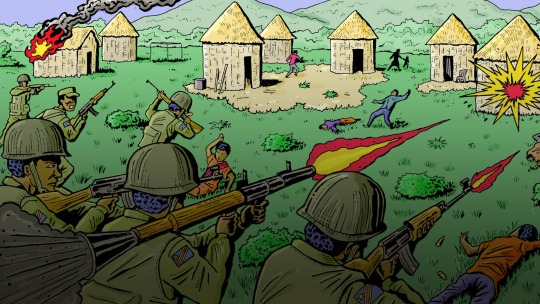
For much of human history, most people lived in rural areas, surrounded by nature and farmland. That all changed with the Industrial Revolution. By the end of the 19th century, European forests were vanishing, cities were growing, and Europeans felt increasingly disconnected from the natural world.
“With industrialization, the link with the natural cycle of things got lost — and that also led to a certain type of romanticization of nature, and a longing for a particular type of nature,” said Bram Büscher, a sociologist at Wageningen University in the Netherlands.
In Africa, Europeans could experience that pure, untouched nature, even if it meant expelling the people living on it.
“The idea that land is best preserved when it’s protected away from humans is an imperialist ideology that has been imposed on Africans and other Indigenous people,” said Aby Sène-Harper, an environmental social scientist at Clemson University in South Carolina.
For Europeans, creating protected parks in Africa allowed them to expand their dominion over the continent and quench their thirst for “undisturbed” nature, all without threatening their ongoing expansion of industrialization and capitalism in their own countries. With each new national park came more evictions of Indigenous people, paving the way for trophy hunting, resource extraction, and anything else they wanted to do.
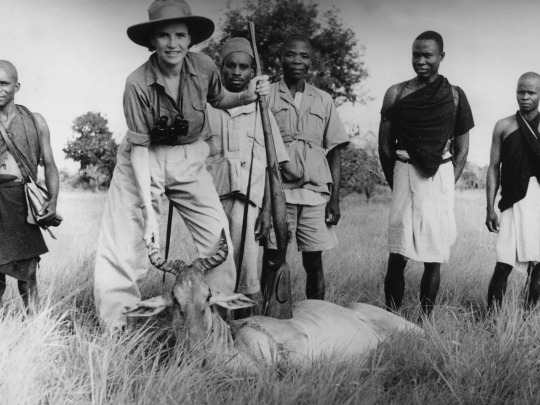
In the mid-19th century, European colonization of Africa was limited, largely confined to coastal regions. But by 1925, when King Albert created his park, Europeans controlled roughly 90 percent of the continent.
At the time, these parks were playgrounds for wealthy Europeans and part of a massive imperial campaign to control African land and resources. Today, there are thousands of protected national parks around the world covering millions of acres, ranging from small enclosures like Gateway Arch National Park in St. Louis to sprawling landmarks like Death Valley in California and Kruger National Park in South Africa. And the world wants more.
Scientists, politicians, and conservationists are championing the protected-areas model, developed in the U.S. and perfected in Africa. In late 2022, at the United Nations Biodiversity Conference in Montreal, nearly 200 countries signed an international pledge to protect 30 percent of the world’s land and waters by 2030, an effort known as 30×30 that would amount to the greatest expansion of protected areas in history.
So how did protected parks move from an imperial tool to an international solution for accelerating climate and biodiversity crises?
In the early part of the 20th century, the expansion of colonial conservation areas was humming along. From South Africa to Kenya and India, colonial governments were creating protected national parks. These parks provided a host of benefits to their creators. There were economic benefits, including extraction of resources on park land and tourism income from increasingly popular safaris and hunting expeditions. But most of all, the rapidly developing network of parks was a form of control.
“If you can sweep a lot of peasants and Indigenous peoples away from the lands, then it’s easier to colonize the land,” Büscher said.
This approach was enshrined by the 1933 International Conference for the Protection of the Fauna and Flora of Africa, which created one of the first international treaties, known as the London Convention, to protect wildlife. The convention was led by prominent trophy hunters, but it recommended that colonies restrict traditional African hunting practices.
“Conservation is an ideology. And this ideology is based on the idea that other human beings’ ways of life are wrong and are harming nature, that nature needs no human beings in order to be saved,” said Fiore Longo, a researcher and campaigner at Survival international, a nonprofit that advocates for Indigenous rights globally.
The London Convention also suggested national parks as a primary solution to preserve nature in Africa — and as many African countries saw the creation of their first national parks in the first half of the 20th century, the removal of Indigenous peoples continued. The convention was also an early sign that conservation was becoming a global task, rather than a collection of individual projects and parks.
This sense of collective responsibility only grew in the aftermath of World War II, when many international organizations and mechanisms, like the United Nations, were created, ushering in a new period of global cooperation. In 1948, the International Union for Conservation of Nature, or IUCN, the world’s first international organization devoted to nature conservation, was established. This would help pave the way for a new phase of international conservation trends.
By the middle of the 20th century, many countries in Africa were beginning to decolonize, becoming independent from the European powers that had controlled them for decades. Even as they lost their colonies, the imperial powers were not willing to let go of their protected parks. But at the same time, the IUCN was proving ineffective and underfunded. So in 1961, the World Wildlife Fund, or WWF, an international nonprofit, was founded by European conservationists to help fund global efforts to protect wildlife.
Sène-Harper said that although the newly independent African countries nominally controlled their national parks, many of them were run or supported by Western nonprofits like WWF.
“They’re trying to find more crafty ways to be able to extract without seeming so colonial about it, but it’s still an imperialist form of invasion,” she said.
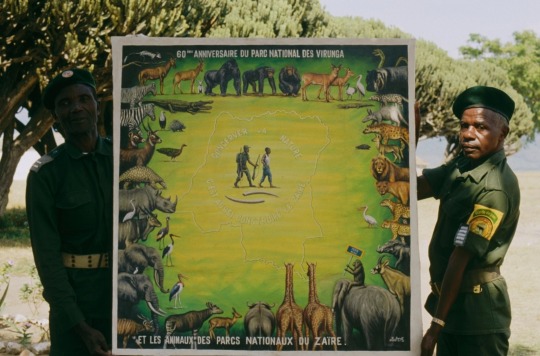
Although these nonprofits have done important work in raising awareness of the extinction crisis, and have had some successes, experts say that the model of colonial conservation has not changed and has only made the problem worse.
Over the years, WWF and other nonprofits have helped fund violent campaigns against Indigenous peoples, from Nepal to the Democratic Republic of the Congo. And amid it all, climate change continues to worsen and species continue to suffer.
In 2019, in response to allegations about murders and other human rights abuses, WWF conducted an independent review that found “no evidence that WWF staff directed, participated in, or encouraged any abuses.” The organization also said in a statement that “We feel deep and unreserved sorrow for those who have suffered. We are determined to do more to make communities’ voices heard, to have their rights respected, and to consistently advocate for governments to uphold their human rights obligations.”
“I think most of [the big NGOs] have become part of the problem rather than the solution, unfortunately,” Büscher said. “The extinction crisis is very real and urgent. But, nonetheless, the history of these organizations and their policies are incredibly contradictory.”
To Indigenous people who had already suffered from decades of colonial conservation policies, little changed with decolonization.
“When we got independence, we kept on the same policies and regulations,” said Mathew Bukhi Mabele, a conservation social scientist at the University of Dodoma in central Tanzania.
In 1992, representatives from around the world gathered in Rio De Janeiro for the United Nations Conference on Environment and Development. The Earth Summit, as it has come to be known, led to the creation of the United Nations Framework Convention on Climate Change as well as the Convention on Biological Diversity, two international treaties that committed to tackling climate change, biodiversity, and sustainable development.
Biodiversity is the umbrella term for all forms of life on Earth including plants, animals, bacteria, and fungi.
Although the Earth Summit was a pivotal moment in the global fight to protect the environment, some have criticized the decision to split climate change and biodiversity into separate conferences.
“It doesn’t make sense, actually, to separate out the two because when you get to the ground, these are going to be the same activities, the same approaches, the same programs, the same life plans for Indigenous people,” said Jennifer Tauli Corpuz, who is Kankana-ey Igorot from the Northern Philippines and one of the lead negotiators of the International Indigenous Forum on Biodiversity.
From left: The 1992 UN Conference on Environment and Development, also known as the Earth Summit, brought together political leaders, diplomats, scientists, representatives of the media, and non-governmental organizations from 179 countries. Indigenous environmentalist Raoni Metuktire, a chief of the Kayapo people in Brazil, talks with an Earth Summit attendee.
In the years following the Earth Summit, biodiversity efforts began to lag behind climate action, Corpuz said.
Protecting animals was trendy during the early days of WWF, when images of pandas and elephants were key fundraising tactics. But as the impacts of climate change intensified, including more devastating storms, higher sea levels, and rising temperatures, biodiversity was struggling to gain as much attention.
“There were 100 times more resources being poured into climate change. It was more sexy, more charismatic, as an issue,” Corpuz said. “And now biodiversity wants a piece of the pie.”
But to get that, proponents of biodiversity needed to develop initiatives similar to the big goals coming out of climate conferences. For many conservation groups and scientists, the obvious solution was to fall back on what they had always done: create protected areas.
This time, however, they needed a global plan, so scientists were trying to calculate how much of the world they needed to protect. In 2010, nations set a goal of conserving 17 percent of the world’s land by 2020. Some scientists have supported protecting half the earth. Meanwhile, Indigenous groups have proposed protecting 80 percent of the Amazon by 2025.
How the world arrived at the 30×30 conservation model
Explore key moments in conservation’s global legacy, from the United States’ first national park in the 19th century to the expansion of colonial conservation areas in the early 20th century and the current push to protect 30 percent of the world’s land and oceans by 2030.
1872: Yellowstone becomes the first national park in the U.S.
1919: King Albert I of Belgium tours Yellowstone, Yosemite, and the Grand Canyon
1925: Albert National Park is established in the Belgian Congo
1933: One of the first international treaties to protect wildlife, known as the London Convention, is created by European conservationists
1948: The International Union for Conservation of Nature (IUCN) is established
1961: The World Wildlife Fund, a non-governmental organization, is founded by European conservationist
1992: The Earth Summit in Brazil creates the Convention on Biological Diversity (CBD)
2010: CBD sets a goal of conserving 17% of the world’s land by 2020
2022: At the UN Biodiversity Conference, nearly 200 countries set 30×30 as an international goal
In 2019, Eric Dinerstein, formerly the chief scientist at WWF, and others wrote the Global Deal for Nature, a paper that proposed formally protecting 30 percent of the world by 2030 and 50 percent by 2050, calling it a “companion pact to the Paris Agreement.” Their 30×30 plan has since gained widespread international support.
But other experts, including some Indigenous leaders, say the idea ignores generations of effective Indigenous land management. At the time, there was limited scientific attention paid to Indigenous stewardship. Because of that, Indigenous leaders say they were largely ignored in the early years of international biodiversity negotiations.
“At the moment, we did not have a lot of evidence,” said Viviana Figueroa, who is Omaguaca-Kolla from Argentina and a member of the International Indigenous Forum on Biodiversity.
Some experts see the push for global protected areas as a direct response to community-based conservation, which grew in popularity in the 1980s, and saw local communities and Indigenous peoples take control of conservation projects in their area, rather than the centralized approach that had dominated during colonial times.
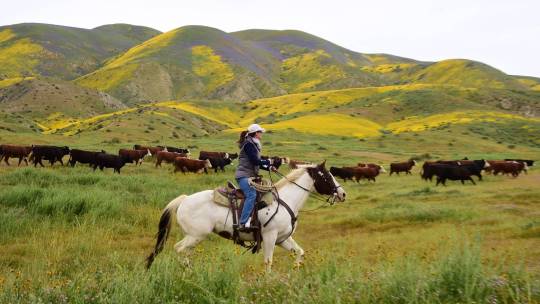
Some of the chief proponents of 30×30 bristle at the suggestion that they do not support Indigenous rights and say that Indigenous land management is at the heart of the initiative.
In response to a request for comment, a spokesperson from WWF pointed to its website, which outlines the organization’s approach to area-based conservation and its position on 30×30: “WWF supports the inclusion of a ‘30×30’ target in CBD’s post-2020 global biodiversity framework (GBF) only if certain conditions are met. For example, such a target must ensure social equity, good governance, and an inclusive approach that secures the rights of Indigenous peoples and local communities to their land, freshwater, and seas.”
“People have cherry-picked a few examples of where the rights of locals have been tread upon. But by and large, in the vast majority of situations, what’s going on is support of local communities, really, rather than anything to do with violation,” said Dinerstein, who now works at Resolve, a Washington, D.C.-based nonprofit focused on environmental, social, and health issues.
But Indigenous advocates say if that were true, they would not keep pushing a model that has already led to countless human rights violations.
“Despite having this knowledge and knowing that people who are not contributing to the destruction of the environment are going to pay for these protected areas, they decided to keep on pushing the target,” Survival International’s Longo said.
The new 30×30 framework agreed to by nearly 200 countries at the UN Biodiversity Conference in December came after years of delay and fierce negotiation. The challenge is now implementing the agreement around the world, a massive task that will require buy-in from individual countries and their governments.
“What was adopted in Montreal is hugely ambitious. And it can only be achieved by a lot of hard work on the ground. And it’s a great document, but it is only a document,” said David Cooper, acting executive secretary of the UN’s Secretariat of the Convention on Biological Diversity.

Part of that work is figuring out what land to protect. And although Indigenous negotiators and advocates did manage to get language that enshrines Indigenous rights into the final agreement, they are still concerned. Over a century of colonial conservation has shown that it only serves the powerful at the expense of Indigenous peoples.
“European countries are not going to evict white people from their lands,” said Longo. “That is for sure. This is where you see all the racism around this. Because they know how these targets will be applied in Africa and Asia. That’s what’s going on, they are evicting the people.”
Dinerstein, however, would argue that European countries have less natural resources to preserve, but more financial resources to help other countries.
“There’s a lot that can be done in Europe,” he said. “So we shouldn’t overlook that as well. I’m just making the point that there’s the opportunity to be able to do much more in other countries that have much less resources.”
Cooper said that in addition to implementation, monitoring and ensuring that rights are upheld will be a crucial task over the next seven years. “There will need to be a lot of work on monitoring. There’s always a justified nervousness that any global process cannot really see what’s happening at the local level and can end up with supporting measures that are perhaps not beneficial at the local level,” he said.
Although Indigenous leaders are going to keep fighting to ensure that the expansion of protected areas does not lead to continued violation of their rights, they are worried that the model itself is flawed. “It’s inevitable that the burden is going to fall again on developing countries,” Corpuz said.
#colonial violence#languages#How the world’s favorite conservation model was built on colonial violence#colonialism#brazil#indigenous populations#Yanomami#bolsanaro#the amazon#amazon rainforest#natural resources#ecology
32 notes
·
View notes
Text
First chapter of my Les Mis ecology grad school AU just posted! Come check out all the different ways I can shamelessly project on these characters.
Story-wise, featuring: Grantaire has a very shitty day followed by a very irritating morning. Enjolras acquires a cause.
Author's notes wise, featuring: opinions on French presses and strong opinions on ways to include code in a paper's supplemental materials.
#les mis#les miserables#enjolras/grantaire#e/r#enjolras#grantaire#college au#well okay. more accurately:#grad school au#les mis fic#fanfiction#detritivores: a story about being cynical about science#future chapters may include opinions on exciting topics such as: soil macroecology; ecological modeling; git/GitHub; and more!#come join me it'll be fun
2 notes
·
View notes
Text
On a cold, rainy, and stormy day in Scotland.
Studying with my favourite blanket, a hot water bottle, and the Monterey Bay Aquarium lo-fi squid playlist really is the best way to study.


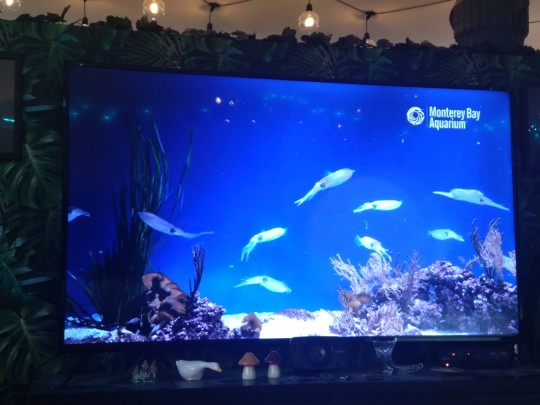
#phd life#ecological modelling#phd research#phdblr#phd diary#marine ecology#population ecology#study life#scottish student#lo fi vibes#monterey bay aquarium#rainyday#warm and cozy
5 notes
·
View notes
Text


the Clouded Crimson Moth (Schinia gaurae) on the umbel of a pink Abronia fragrans
#kinda looks like a lesbian flag moth ngl…#he was a little cold from the night so he was perfectly still for these pics. what a good model#moth#flowers#pink#ecology#nature#ID in alt#insects
6 notes
·
View notes
Text
the desire to keep my protagonist cast small so i have a good grasp on everyone and their motivations and purposes in the grand story VS the overwhelming urge to create a butch werebear woman who's all kinds of unhinged
#soda.txt#unfortunately i can't just slap in a new character without opening an ecological niche for them first#this would fuck tho. and i'd get to model a bear which would also be rad
4 notes
·
View notes
Text
This is so important, and I think more people should hear it. I'm also a PhD student, and my project involves looking at the impacts of climate change on marine ecology.
It's so infuriating seeing so many climate deniers talk about "conspiracies" and "woke propaganda" when they haven't done the first but if research or applied critical thinking to legitimately back up any of their claims.
Because, I've seen the reports, I've seen the studies, and I've seen scientists desperately try to reason with governments and businesses to reduce their carbon emissions, to reduce waste, and use clean energy. Because we know what's next if positive changes aren't made.
There's so so much historical climate data showing trend lines that are telling us that, where we're currently heading, is the path to irreversible global warming, biodiversity loss, and mass extinction.
Please listen to us when we say that climate change is real, it is happening right now, and we can fix it if we're quick.

#marine ecology#ecological modelling#phd research#ecology and conservation#climate change#climate science#climate activism#climate hope#climate anxiety#climate#global warming#listen to scientists
89K notes
·
View notes
Text
My dynamic energy budget (DEB) model using data for my study species finally resembles something coherent!
There's still so much I need to learn about this type of model before it can be used fully in my project though, and some parameters that need figuring out properly. But look! It goes!

Also, it snowed quite well over the weekend here in Scotland. So please enjoy this photo I took of a loch I stopped at while having a car-lunch at the weekend! :)

#phd life#phdblr#ecological modelling#marine biology#phd research#phd diary#dynamic energy budget#marine ecology#netlogo#scottish scenery#beautiful scotland#frozen loch#lovely loch#marine mussels
5 notes
·
View notes
Text
As an educator it never fails to floor me (and, often, nearly bring me to tears) how kids react and open up when I give them positive feedback. Often it seems like no adult has ever bothered to engage with them and center them in the conversation. Maybe it helps that I still enjoy “childlike” things like drawing and star wars and dinosaurs, but like. still. any time I treat them like the complex, fully-formed human beings that they are, any time I ask questions that get beyond the surface level, their eyes light up and they transform.
Like once on a five-day field program, I complimented a shy, quiet kid’s watercolor painting, told them I liked making art too and asked them more questions about it — what their favorite medium was, if they found watercolors tricky like I do, etc. — and it was like a switch was flipped. They told me all about their art classes and what they liked to make, what techniques they were struggling with, AND we found out we both were interested in herbalism! The kid stuck to me like glue for the rest of the week and kept showing me all the art they were making, as well as asking me all about the edible and medicinal plants in the region. And all it took was me saying something like, “Whoa, that painting is amazing! The detail on the trees is so realistic, and you really captured the texture of the sandstone! I like to paint, too, but rocks are really hard for me. I can never get them to look right. How did you make them look so 3D?” instead of just “wow that’s pretty!”
And that happens over and over. A little boy who didn’t really talk to anyone saw me drawing a mandalorian with sidewalk chalk and the next day he brought a bunch of his drawings of clone wars battle scenes to show me, and after I told him how impressed I was with his creativity and attention to detail, he wouldn’t stop talking to me and asking me how to draw various characters!! Recently I had a long and delightful conversation with an 8 year old about his favorite species in the ceratopsidae family. I’ve had hours-long discussions with teenage boys on the various merits and minutiae of legends vs. canon star wars material and the ways that universe mirrors our real-life sociopolitical landscape. 9 year old girls talk a mile a minute when they find out I like horses and ask them about their favorite breed, and shy 18 year olds suddenly can’t stop smiling and bouncing on their heels when I ask them to tell me more about their favorite music artists and mention that hey, my 25 year old best friend is also into K-pop, just like you!! Who’s your favorite group?? 12 year olds have asked me if they can have more free time instead of a structured lesson and are shocked when I say yes, and then confess to being stressed and sad because they’re already so exhausted and burnt out from the school-homework-extracurriculars grind and they can’t imagine doing it for six more years and then working for decades like their parents. and then they ask if I want to come see the fort they’re building out of fallen branches and maybe help them build it? or would I like to come catch crawdads or build a little snail hotel?
Kids of all ages are dealing with so much stress and negative feedback. They’re often made to feel — whether directly or indirectly, by their parents or teachers or peers or bosses or church elders, etc. — that they’re not doing enough. That they’re lazy and always on their phones and that their interests are frivolous and that they’re too loud or in the way or annoying. Hell, I was made to feel that way when I was their age, and it breaks my heart that many kids are still not getting the positive feedback they need to thrive. So I make a point of giving them the level of respect and autonomy and engagement that I give adults.
The least us adults can do, especially those of us who teach kids or are otherwise around them a lot, is show them through our words and actions that we genuinely value their interests, opinions, and presence in our lives.
consider: teenagers aren’t apathetic about everything they’re just used to you shitting all over whatever they show excitement about
#literally so many kids have told me I’m the best teacher/instructor etc they’ve ever had#and I KNOW it’s damn well not because I’m the best at teaching lessons or knowing the most things#I think it’s literally just because I listen to them and am interested in hearing their opinions and that I’m goofy sometimes#like I’m not tryna be a hardass ‘we MUST do a lesson RIGHT NOW and do it THE WAY I WROTE IT’ kind of teacher#I’m really thankful to my current employer who’s all about student-centered learning and SEL#I’ve learned so much from him about how to be a good educator#and being a good educator does not = cramming the most info into a lesson or having the most disciplined kids#it means you are not only a teacher to these kids but also a mentor and role model and responsible for their social development#you are there to support them#that may look like teaching them about ecology and setting them up to meet educational standards!#however! it can also look like giving them your undivided attention while they ramble about a webcomic you’ve never heard of#or hunting for bugs in the creek or thanking them for baking you a mud pie and pretending to eat it with gusto#life tag#important
415K notes
·
View notes
Text
much less important than wealthy landowners in the united states having access to a plentiful supply of commodity native plants is the reality that in 500 years, indigenous and peasant peoples in the united states must have land access and autonomous food systems in order for this land to survive ecologically
#ecology#still thinking about wild things conference#very interesting to see conflicting elements present in the same rooms with very different goals#beeblings#particularly thinking about joey santore's comments and how they conflict with his apparent business model#curious to see how that plays out
0 notes
Text
Yellowjacket-Mimicking Moth: this is just a harmless moth that mimics the appearance and behavior of a yellowjacket/wasp; its disguise is so convincing that it can even fool actual wasps

This species (Myrmecopsis polistes) may be one of the most impressive wasp-mimics in the world. The moth's narrow waist, teardrop-shaped abdomen, black-and-yellow patterning, transparent wings, smooth appearance, and folded wing position all mimic the features of a wasp. Unlike an actual wasp, however, it does not have any mandibles or biting/chewing mouthparts, because it's equipped with a proboscis instead, and it has noticeably "feathery" antennae.
There are many moths that use hymenopteran mimicry (the mimicry of bees, wasps, yellowjackets, hornets, and/or bumblebees, in particular) as a way to deter predators, and those mimics are often incredibly convincing. Myrmecopsis polistes is one of the best examples, but there are several other moths that have also mastered this form of mimicry.

Above: Pseudosphex laticincta, another moth species that mimics a yellowjacket
These disguises often involve more than just a physical resemblance; in many cases, the moths also engage in behavioral and/or acoustic mimicry, meaning that they can mimic the sounds and behaviors of their hymenopteran models. In some cases, the resemblance is so convincing that it even fools actual wasps/yellowjackets.

Above: Pseudosphex laticincta
Such a detailed and intricate disguise is unusual even among mimics. Researchers believe that it developed partly as a way for the moth to trick actual wasps into treating it like one of their own. Wasps frequently prey upon moths, but they are innately non-aggressive toward their own fellow nest-mates, which are identified by sight -- so if the moth can convincingly impersonate one of those nest-mates, then it can avoid being eaten by wasps.

Above: Pseudosphex laticincta
I gave an overview of the moths that mimic bees, wasps, yellowjackets, hornets, and bumblebees in one of my previous posts, but I felt that these two species (Myrmecopsis polistes and Pseudosphex laticincta) deserved to have their own dedicated post, because these are two of the most convincing mimics I have ever seen.

Above: Pseudosphex sp.
I think that moths in general are probably the most talented mimics in the natural world. They have so many intricate, unique disguises, and they often combine visual, behavioral, and acoustic forms of mimicry in order to produce an uncanny resemblance.
Several of these incredible mimics have already been featured on my blog: moths that mimic jumping spiders, a moth that mimics a broken birch twig, a moth caterpillar that can mimic a snake, a moth that disguises itself as two flies feeding on a pile of bird droppings, a moth that mimics a dried-up leaf, a moth that can mimic a cuckoo bee, and a moth that mimics the leaves of a poplar tree.
Moths are just so much more interesting than people generally realize.
Sources & More Info:
Journal of Ecology and Evolution: A Hypothesis to Explain Accuracy of Wasp Resemblances
Entomology Today: In Enemy Garb: A New Explanation for Wasp Mimicry
iNaturalist: Myrmecopsis polistes and Pseudosphex laticincta
Transactions of the Entomological Society of London: A Few Observations on Mimicry
#entomology#arthropods#lepidoptera#yellowjacket-mimicking moth#wasp-moth#clearwing moths#animal camouflage#myrmecopsis polistes#pseudosphex laticincta#pseudosphex aequalis#moths#insects#bugs#mimicry#evolution#hymenopteran mimics#defense mechanisms#animal facts#wasps#yellowjackets#mimicry among moths#moths are amazing#and wildly underrated
13K notes
·
View notes
Text

#tesla#elon musk#model y#electric cars#electric vehicles#tax credits#ecology#sustainable energy#sustainable transport#go green#american made#made in america#autonomous#autonomous driving#self driving cars#self driving vehicles#wigoutlet
0 notes
Text
Science Literacy Week: September 18-24 – Fostering Curiosity and Knowledge in Saskatchewan Schools

View On WordPress
#classroom activities#classroom experiments#classroom science#critical thinking#curriculum integration#data analysis#data recording#ecological studies#ecosystem exploration#ecosystem model#educational activities#educational enrichment#educational outcomes#educational resources#environmental awareness#environmental conservation#Environmental Education#environmental impact#environmental impact study#environmental issues#environmental stewardship#George Genereux Urban REgional Park#grades K-2#hands-on experiments#hands-on learning#inquiry-based learning#interactive learning#interdisciplinary learning#K-2 science#leaf collection
0 notes